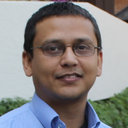Comparison of anthropometric, metabolic and dietary fatty acids profiles in lean and obese dyslipidaemic Asian Indian male subjects.
Klíčová slova
Abstraktní
OBJECTIVE
To compare obesity measures, metabolic profiles and dietary fatty acids in lean and obese dyslipideamic Asian Indian male subjects.
METHODS
Cross-sectional.
METHODS
Asian Indians living in the eastern part of India.
METHODS
One hundred and thirty (Group I: lean control, n=50; Group II: lean dyslipidaemic, n=40 and Group III: obese dyslipidaemic, n=40) Asian Indian male subjects (> or =30 years) living in the eastern part of India.
METHODS
Anthropometric measures namely height, weight, circumferences of waist (WC) and hip, lipids (total cholesterol (TC) and triglycerides (TG)), lipoproteins (high- (HDL) and low-density lipoproteins (LDL)), fasting plasma glucose (FPG) and dietary fatty acids were obtained from each participant. Obesity measures, that is, body mass index (BMI), waist-hip ratio (WHR) and conicity index (CI) were subsequently calculated from anthropometric measures. Obesity was defined as individuals having BMI> or =25 kg/m(2). SUBJECTS with one or more of the following conditions were considered as dyslipidaemic: TG> or =2.3 mmol/l, TC> or =6.2 mmol/l, or TC/HDL> or =4.4 mmol/l. Daily intake of nutrients as well as saturated (SFA), monounsaturated (MUFA) and polyunsaturated fatty acids (PUFA) were estimated by adding together all the foodstuffs consumed on weekly and monthly manner. Conversion of foodstuffs into nutrients was performed according to standard nutritive values of Indian foodstuffs.
RESULTS
Analysis of variance with Scheffe's post hoc test revealed that Group I had significantly lower mean compared to both Group II and Group III for age, WC, WHR, CI, TC, TG, LDL, FPG, total carbohydrates intake and intake of trans fatty acids. On the other hand, Group I had significantly lower mean than Group III only for BMI as well as intake of total proteins, total fats, total energy and erucic acids. Although, Group I had significantly greater mean compared to both Group II and Group III for HDL, UFA/SFA, MUFA/SFA and PUFA/SFA. Pearson's partial correlations (controlling for age and total energy) revealed that central obesity measures (WC, WHR and CI) had significant association with dietary fatty acids and their ratios. Furthermore, partial correlations (controlling for age) also showed that the ratios of unsaturated to SFA had significant negative association with lipids, lipoproteins (except HDL) and plasma glucose. Discriminant function analysis revealed that overall 78% of all entries were positively (correctly) classified in three groups using fatty acids and their ratios.
CONCLUSIONS
It seems rational to argue that while dealing with dyslipidaemic Asian Indians, clinicians should consider obesity measures, metabolic profiles and dietary fatty acids simultaneously to better comprehend the condition (s).


